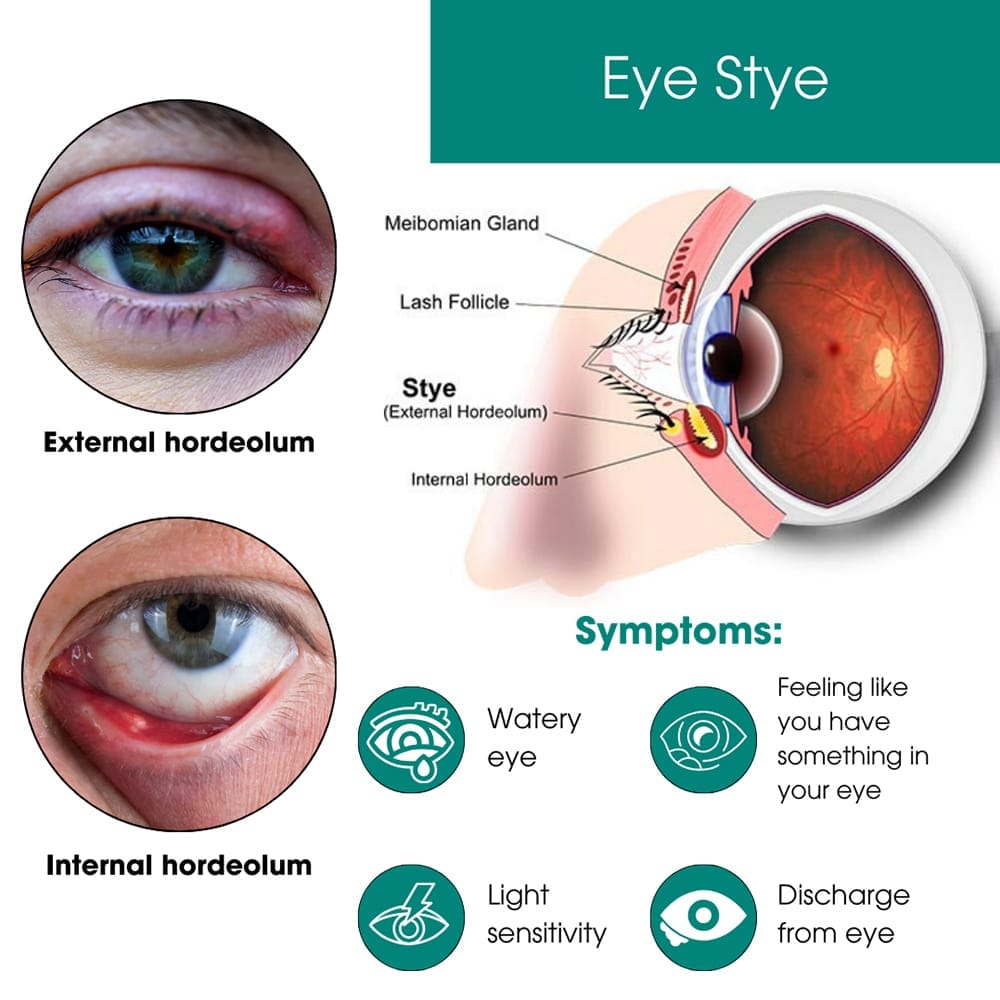A stye occurs as a small lump on the underside of an eyelid or at the base of an eyelash. A stye can be extremely painful and is usually caused by a bacterial infection. You can also get an eye stye if you have blepharitis, an inflammation of the eyelids that can also be very uncomfortable.
There are two types of eye styes:
Although eye styes are annoying and unbecoming, they’re not life threatening and most can be remedied at home once you’ve been seen by your NYC eye doctor in Manhattan, because an eye stye can also be confused with a chalazion, also called a hordeolum. The main difference is that a chalazion is not usually painful and it grows farther back on the eyelid. If you’re experiencing eyelid pain or swelling of any kind, you need to see your optometrist at Eye Physicians without delay.

In addition to being unseemly and painful, getting an eye stye can have more symptoms that make them even more uncomfortable. Everyone is unique and may suffer certain symptoms that others don’t.
A few of these manifestations include:
Remember, most styes resolve on their own within a few days. But if you have constant redness, swelling of the whole eyelid, or your symptoms are getting more severe, seek medical attention right away. Your vision is a gift that can’t be replaced.
After checking in with your NYC eye doctor, he may recommend treatment for an eye stye at home, which is pretty simple and includes ways to reduce symptoms and alleviate pain, such as:
For a warm compress, just rinse a clean washcloth in warm water, wring it out and place over your eye for 15 to 20 minutes. Repeat four times a day. You can also use a warm, moist tea bag — black tea works best — to reduce swelling and provide antibacterial properties. Never pierce a stye, although it may be tempting because it looks like a pimple.
A stye is formed by dirt, makeup or dead skin clogging an oil gland, which then becomes infected. Some people are naturally more likely to get an eye stye than others. If you have had a stye before, you’re more likely to get another.
Reduce or eliminate risks by changing certain lifestyle habits, such as:
In addition to poor hygiene practices, there are other risks for developing a stye over which you don’t have as much control, but that make it more likely that you will form a stye at some time in your life.
These physical conditions include:
An eye stye can be easily diagnosed by your Manhattan eye doctor. They can use a magnifying glass to confirm, if needed.
If at-home treatment hasn’t helped for a couple days, you may need further eye stye treatments from your doctor that may include:
It’s fine to see family and friends when you have a stye, they aren’t contagious through casual contact. It is, however, technically contagious if the bacteria from your eye transfers to someone else by direct contact with your eye or by touching an object or surface that they then touch.
This is why children tend to develop styes more often than adults and why you need to have access to the very best pediatric eye doctors. If you or your child do happen to get a stye, you may want to carry hand sanitizer with you for when soap and water isn’t available.
In addition to explaining the benefits of hand washing to your kids, a pediatric eye doctor:
Although most styes are not life threatening, if the bacteria spreads, there may be complications. It’s imperative that you keep your eyes and hands clean.
While it’s best to get an accurate diagnosis and advice whenever you have any issues with your eyes, seek treatment is you experience symptoms such as:
It’s better to be safe than sorry when it comes to your vision. If a stye gets worse, it may lead to pre-septal cellulitis, which can develop into an even worse infection. When you want your eyes in the best hands in NYC, contact Eye Physicians. Don’t take the gift of sight for granted when a simple visit that takes less than hour assures you of the best eye care in the city.
Eye Physicians
110 Lafayette St, Suite 503
New York, NY 10013
(212) 292-4814
Entrust the care of your precious eyesight to highly skilled and experienced eye care professionals. For top-notch ophthalmologists and optometrists in Downtown Manhattan, choose Eye Physicians. Eye Physicians ensures prompt care, precise diagnosis, and personalized treatment plans.
Schedule an Appointment